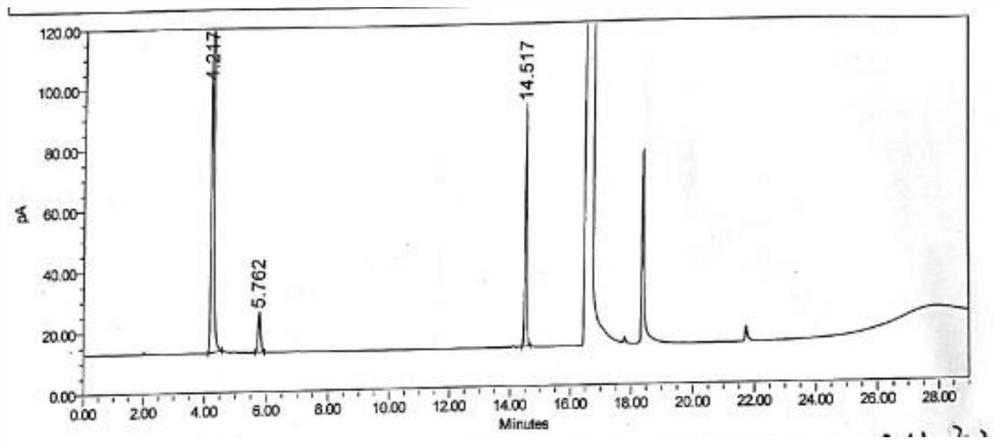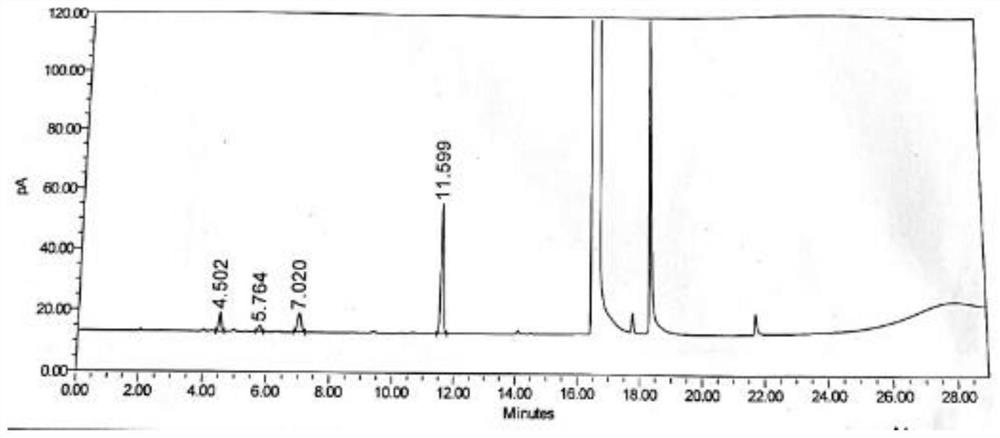Method for efficiently detecting residual solvent in poly-L-lactic acid and preparation thereof
A technology of poly-L-lactic acid and residual solvents, applied in measuring devices, instruments, scientific instruments, etc., can solve problems such as differences in solvents and quality control methods, achieve broad prospects for industrialization, good sampling precision, and accurate measurement results reliable effect
- Summary
- Abstract
- Description
- Claims
- Application Information
AI Technical Summary
Problems solved by technology
Method used
Image
Examples
Embodiment 1
[0099] Example 1 Preparation of PLLA polymer
[0100] Add 500g of L-lactide to a 2000mL single-necked bottle, and heat it to 130°C under nitrogen protection. After the L-lactide is completely melted, add 0.15g of stannous isooctanoate and 1.5g of lauryl alcohol, and keep warm at 130°C React for 24 hours, after cooling the reaction solution to room temperature, add 1L of dichloromethane, stir to dissolve, filter, transfer the resulting solution to a 50L reaction kettle, add 4L of dichloromethane, dropwise add 25L of methanol, crystallize at room temperature, filter, The filter cake was dried at 50°C to obtain PLLA polymer with a weight average molecular weight of 36,000.
Embodiment 2
[0101] Example 2 Preparation of PLLA polymer
[0102] Add 500g of L-lactide to a 2000mL single-necked bottle, and heat it to 120°C under nitrogen protection. After the L-lactide is completely melted, add 0.1g of stannous chloride and 1.2g of lauryl alcohol, and keep the reaction at 120°C. After 48 hours, after the reaction solution was lowered to room temperature, 1 L of chloroform was added, stirred to dissolve, filtered, the solution was transferred to a 50 L reaction kettle, 4 L of chloroform was added, 25 L of n-heptane was added dropwise, crystallized at room temperature, filtered, The filter cake was dried at 50°C to obtain PLLA polymer with a weight average molecular weight of 39,000.
Embodiment 3
[0103] Example 3 Preparation of PLLA polymer microparticles
[0104] Weigh 200 g of the PLLA polymer prepared in Example 1, add 4 L of tetrahydrofuran, stir to dissolve, slowly add 12 L of anhydrous methanol dropwise, after the dropwise addition, stir for about 1 hour, filter, and rinse the filter cake with anhydrous methanol, Vacuum-dried at 35°C and passed through a 200-mesh sieve to obtain PLLA particles with a heat of fusion of 54.3 J / g, D(3,2) of 21.7 μm, D(4,3) of 32.4 μm, and a maximum particle size of about 66.9 μm.
PUM
| Property | Measurement | Unit |
|---|---|---|
| length | aaaaa | aaaaa |
| thickness | aaaaa | aaaaa |
| thickness | aaaaa | aaaaa |
Abstract
Description
Claims
Application Information
 Login to View More
Login to View More - R&D
- Intellectual Property
- Life Sciences
- Materials
- Tech Scout
- Unparalleled Data Quality
- Higher Quality Content
- 60% Fewer Hallucinations
Browse by: Latest US Patents, China's latest patents, Technical Efficacy Thesaurus, Application Domain, Technology Topic, Popular Technical Reports.
© 2025 PatSnap. All rights reserved.Legal|Privacy policy|Modern Slavery Act Transparency Statement|Sitemap|About US| Contact US: help@patsnap.com



